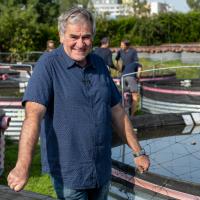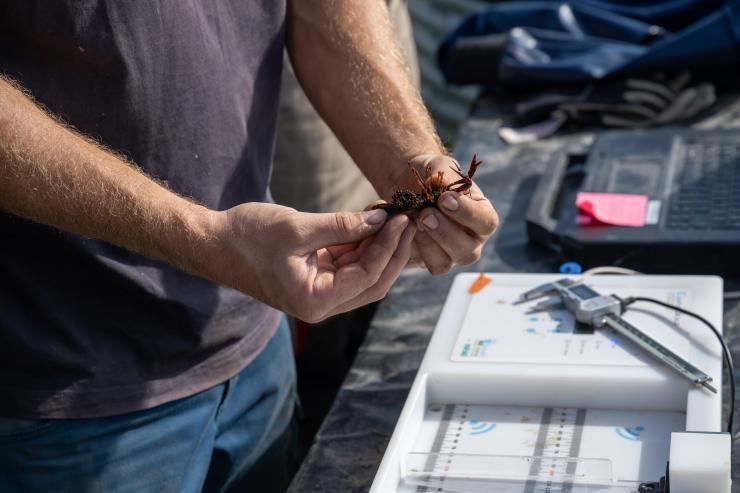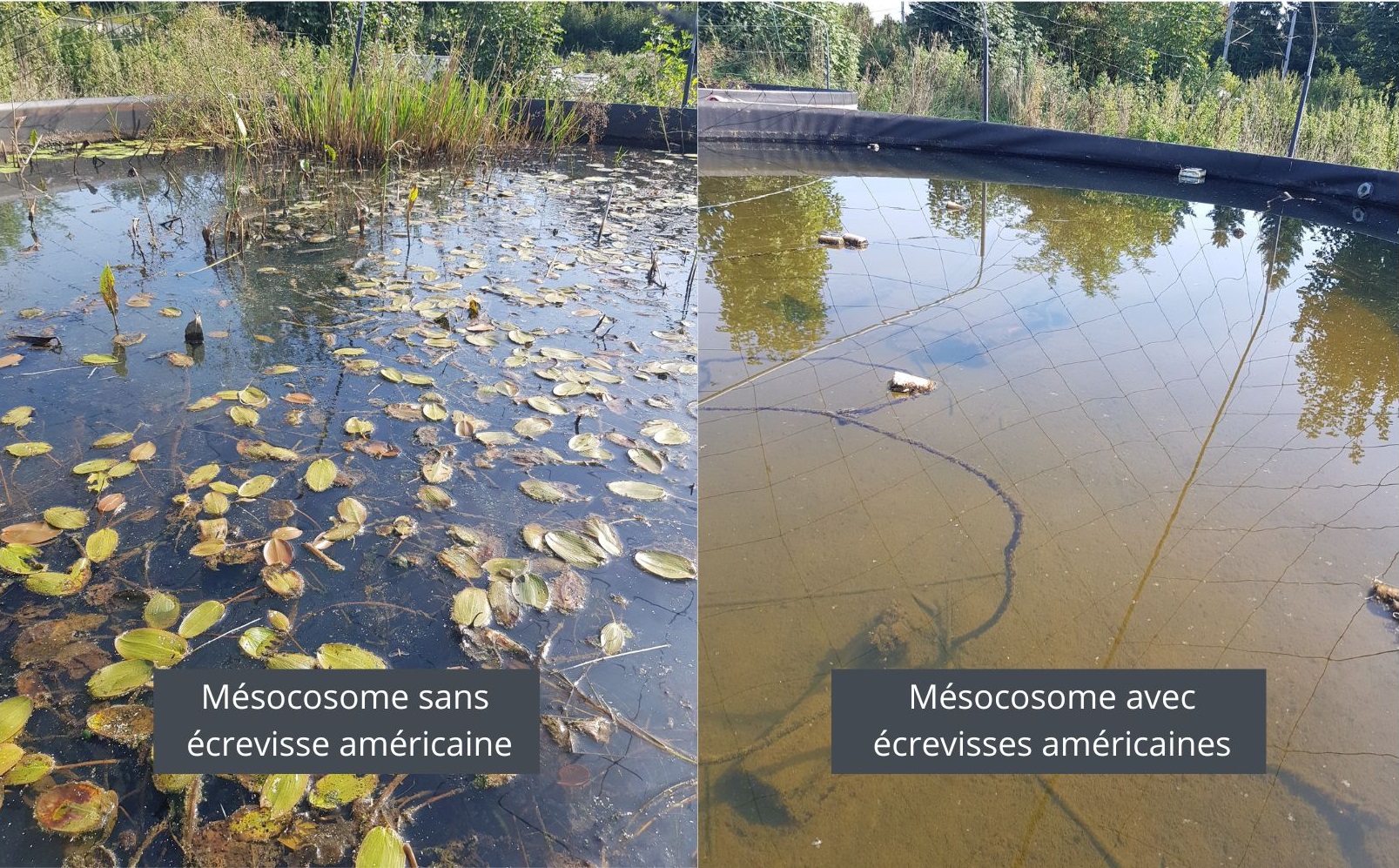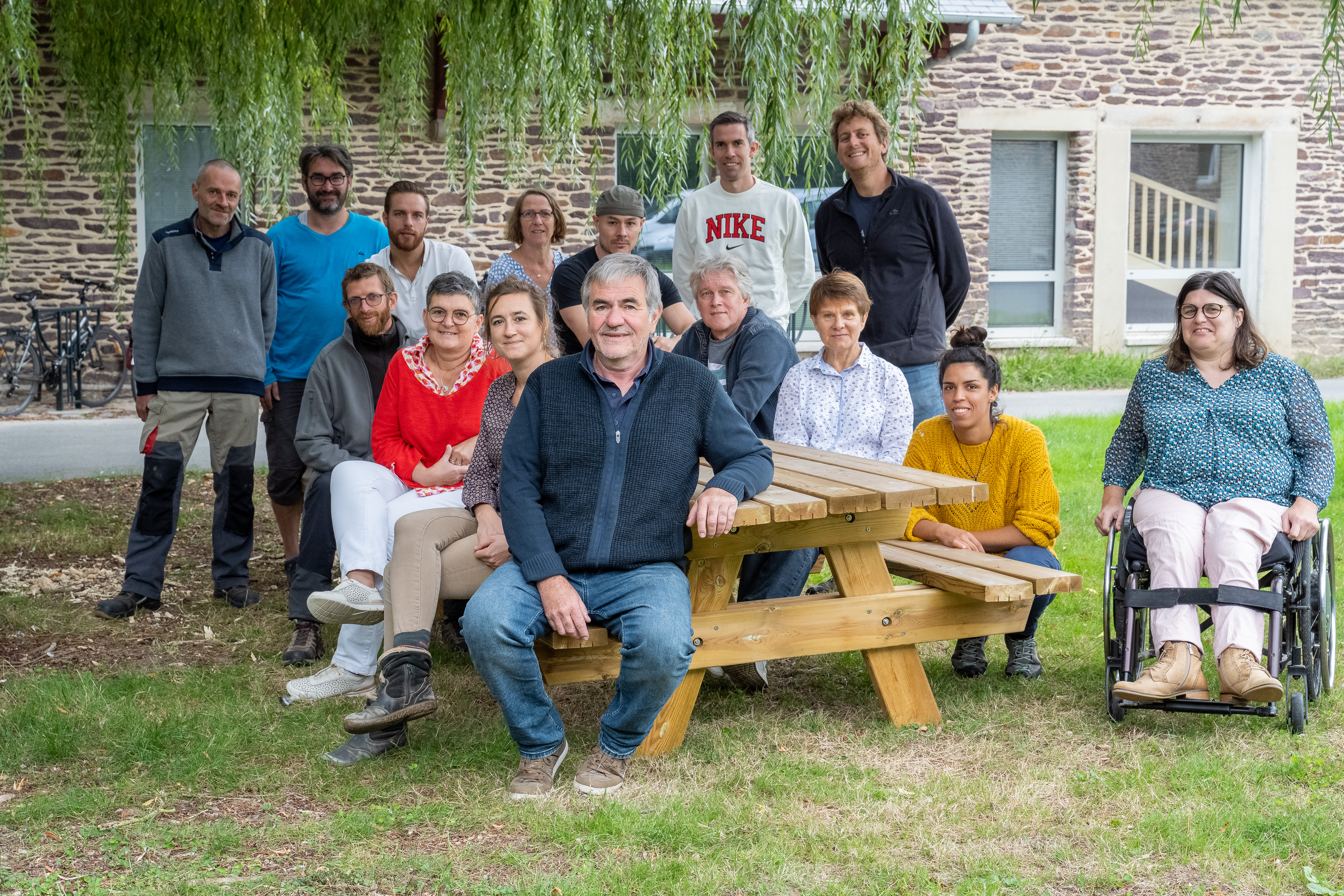
Biodiversity Reading time 5 min
Didier Azam, fair-weather sailor
Published on 28 November 2022
This film enthusiast never imagined his name in lights, nor did he see himself as a research engineer, for that matter. Water is his passion, and the creatures that live in it. In particular, understanding ecosystems and what happens if you change one element of them: pollution, invasive species, human activities for example. But to arrive at understanding, one must conduct experiments. And this has been Didier’s leitmotiv during his 40-year career at INRAE: developing experimental facilities.
A river runs through it
With the scientists, we started to imagine the first installations to better understand these aquatic ecosystems
Combining work and passion was an obvious choice. After earning a vocational diploma in pisciculture, Didier worked in fish breeding. He then spent several years in vocational education, an activity that left him some time to explore parallel paths: an internship on an oceanographic boat to inventory Gadidae larvae (cod, pollack, etc.) off the Faroe Islands, then a first experience in research, at the CTGREF1, to work on the development of frog and crayfish farms. In 1982, Didier joined INRA, in the hydrobiological ecology unit, to work on monitoring wild fish (salmon, trout, etc.) on the Scorff and the Oir, two rivers that would always flow through his life. "At the time, we were two technicians. I was more interested in the experimental part. With the scientists, we started to imagine the first installations to better understand these aquatic ecosystems”. Didier never would have guessed that he would become director of the experimental unit that only existed in his imagination at the time...
Experimentation: smooth sailing?
What I wanted was to develop these tools for experimentation and observation
"At first, we were digging ponds by hand, adding wooden boards and plastic film; it was all very low-tech. Little by little, we started looked for funding. The first arrived in 1987, allowing us to build the Rheu station”. This was just the beginning: in 1994, the first aquaculture hall was built with ponds and greenhouses to study the ecological aspects of the environment. In 1997, a new building was developed, dedicated to aquatic ecotoxicology, and ponds were built in which the ecosystems were reproduced and the parameters controlled. But it was in 1998 that the U3E experimental unit was really created with six staff and none other than Didier Azam at its head. "I was one of the few people to be a unit head while being a technician!” He then proposed grouping together the experimental facilities in Rennes and Le Rheu, as well as the Scorff and Oir monitoring sites. Didier has no shortage of ideas for developing his experimental unit and he knows how to defend them vigorously. He opens the facilities to other scientists and institutions. "This has enabled us to participate in ambitious research projects, to be considered a serious partner, and to obtain funding to maintain our facilities and experiments”. The latest challenge? Consolidate the team to make sure these projects go on. "We went from 6 staff to 40! And I went from being a technician to a research engineer! That was not my primary goal. What I wanted was to develop these tools for experimentation and observation and to be recognised”. Today, it’s safe to say: mission accomplished!
Forging partnerships
-
2019, U3E joins the European Aquacosm infrastructure (with about thirty partners in 15 countries)
-
2018, the LIFE (Living In Freshwaters and Estuaries) infrastructure is recognised by INRAE
-
2017, the biological resource repository COLISA (ichthyological samples) is recognised by the GIS IBISA and joins the National RARe infrastructure
-
2017 a large part of the Unit's activities are included in the DCF: European network for data collection in support of scientific advice for the European Common Fisheries Policy
-
2013, the first joint research, development and innovation centre between the OFB and INRAE is attached to the U3E
-
2011 The U3E is attached to the National Infrastructure in Biology and Health "AnaEE-France”
-
2008 U3E becomes part of the Environmental Research Observatory on Diadromous Fish in Coastal Rivers (ORE DiaPFC).
Navigating choppy waters
We look at the overall state of the system through the prism of these fish, most of which are protected species
Didier's determination and perseverance have helped the U3E unit conduct experiments for ambitious scientific projects. The unit's teams carry out long-term observations in three rivers: the Oir, the Scorff and the Bresle. The aim is to monitor migratory fish (trout, sea trout, salmon, eels) in order to better understand how they function, and determine whether these rivers are still adequate homes for them. "We look at the overall state of the system through the prism of these fish, most of which are protected species". On the strength of this expertise, since 2017 the unit has been working to support European policy makers by providing information to European authorities about the best management methods for these species (quotas, protection, etc.).

As for the experimental station, it follows whatever research projects are happening at the time. The ponds help researchers understand the influence of various parameters on ecosystems: pollution, temperature, presence or absence of invasive species, etc. In Le Rheu, technicians observe the impact of climate change and decreasing biodiversity on ecosystems, or how ecosystems evolve if the species are changed or the supply of nutrients via wastewater modified. In greenhouses, the researchers are currently studying the primrose willow, an invasive plant which clogs canals and upsets ecosystems.

On the left, a mesocosm without American crayfish and on the right a mesocosm with American crayfish.
Oh Captain! My Captain!
Judging by the harmonious atmosphere in the labs and facilities, Didier's leadership is based on mutual trust. This faithful captain at the helm of a ship of 40 crew members finds the same trust more broadly throughout the Institute: "I was able to express and defend my ideas, even if not everyone always shared them”. Some 40 years on, his enthusiasm remains intact: "The experimental units are very dear to me, they are one of the distinguishing features of INRAE. Scientists from other institutes work with us to use these infrastructures. It's a wonderful way to work together”.
1. CTGREF, Centre technique du génie rural des eaux et forêts. Later known as CEMAGREF, then IRSTEA. INRA and IRSTEA merged in 2020 to become INRAE.

No Oscar but an INRAE Award!
"Normally these are things that only happen to other people! It's a pleasure of course, a source of pride, but it's also difficult because I don't like being in the spotlight. You could say that it's recognition, but I got recognition through the success of the internal competitions that I won and also through the confidence that I was given to carry out my projects. In the end, the INRAE Award is a bit like the cherry on the cake”.
Now what?
The time has come for Didier to pass the baton. In two years' time, he will be retiring, but his friend and long-time accomplice, Frédéric Marchand, with whom he built this successful unit 40 years ago, will take the helm.
MINI-CV
61 years old, 3 children
- Education
1976: Vocational diploma in pisciculture - Career
Since 1998: Director of INRAE’s U3E Experimental Unit for Aquatic Ecology and Ecotoxicology at the INRAE Brittany-Normandy research centre
1982: ACT 5B (contractual technical assistant) at the Hydrobiological Ecology Laboratory in Rennes
1978: High School teacher in aquaculture - Involvement in decision-making bodies
> 2017: Setting up and co-piloting of the LIFE research infrastructure grouping 4 INRAE entities, including the U3E labelled in 2020 by INRAE
> 2015: member of the steering committee (CODIR) of the national infrastructure AnaEE-France
> 2008: co-piloting of the ORE Dia PFC Environmental Research Observatory on diadromous fish in coastal rivers
> Since 2005: expert appointed to the National Commission for Experimental Units in charge of environmental infrastructures
> Member of the Bureau de l'expérimentation animale and ECODIV division correspondent to coordinate actions related to the use of animals for scientific purposes at INRAE
> Involvement in the "fish" animal experimentation unit, as well as in the national coordination unit for the control of professional risks in experimental units and facilities - Hobbies
Fish and cinema! Didier volunteers at La Bobine cinema
